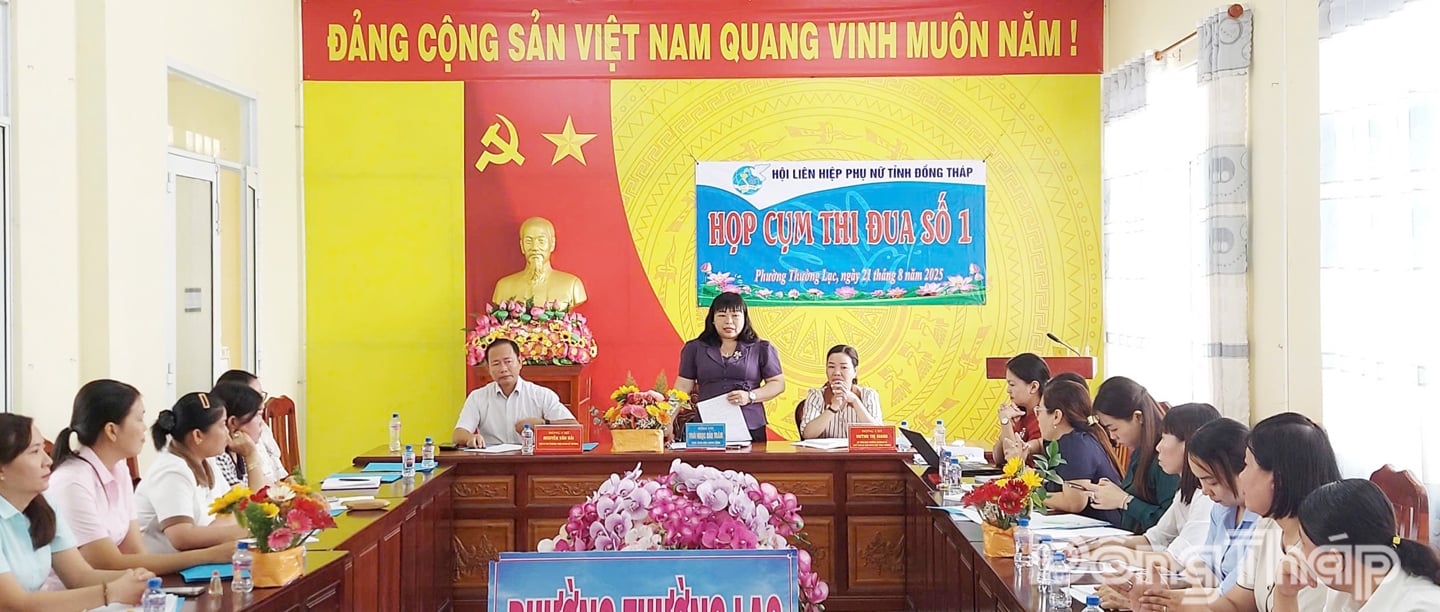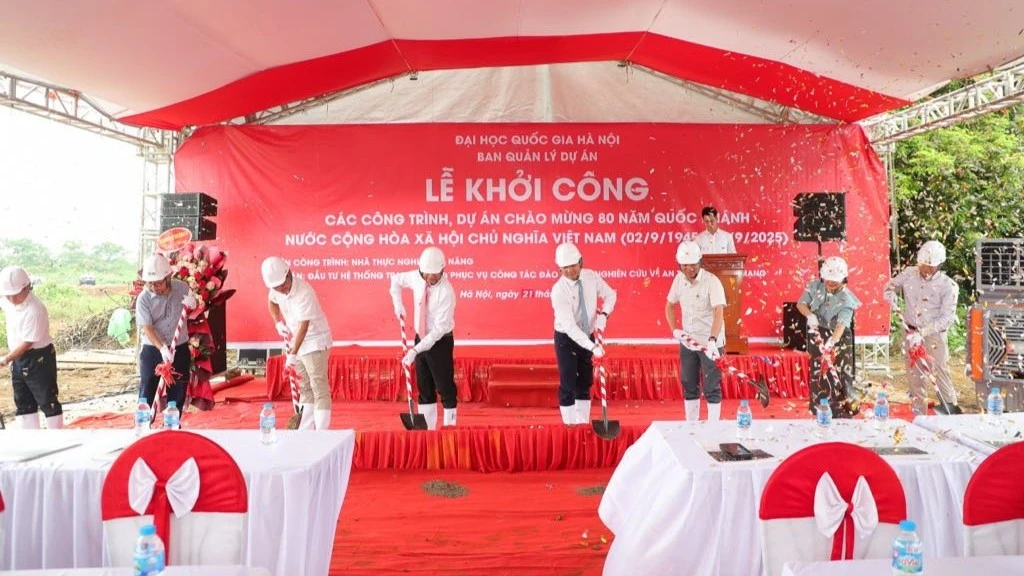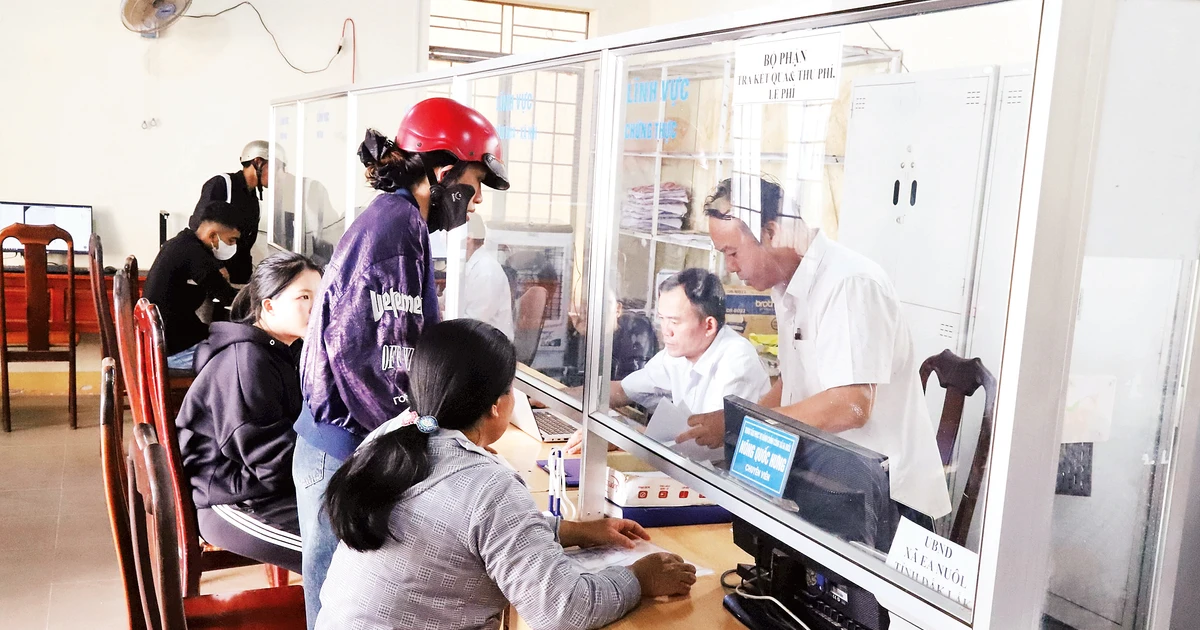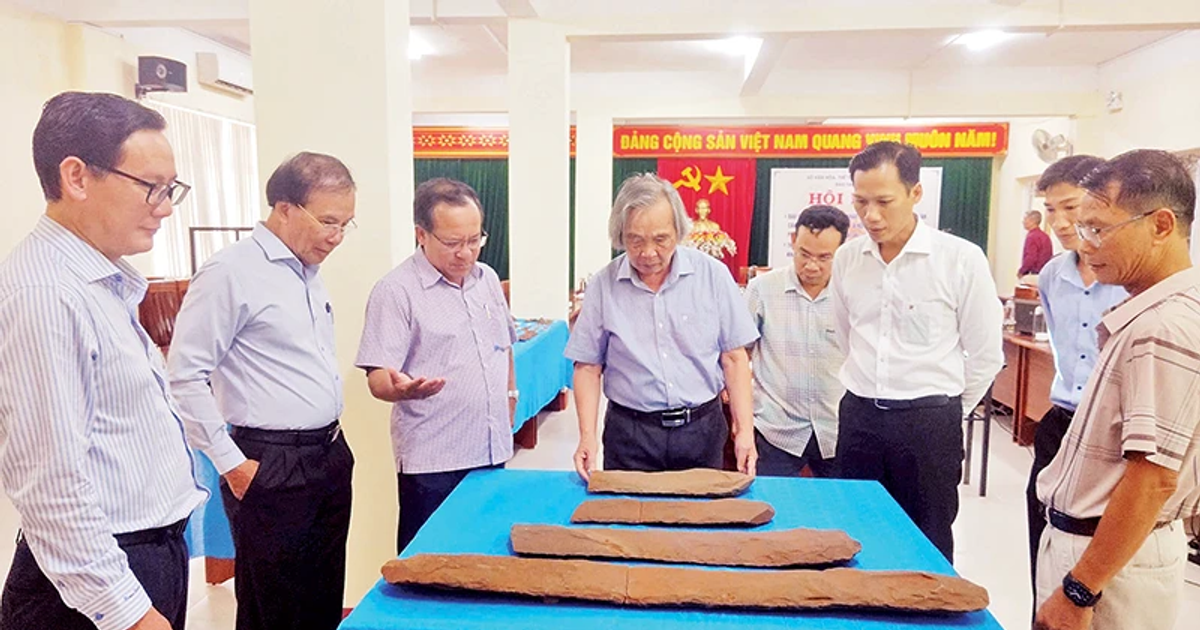The informal economic sector plays an important role in the Vietnamese economic picture, but exists as a "gray area" with great challenges in management and statistics. Experts believe that when there are appropriate and accurate policy tools, this will be the key to turning the "gray area" into a "bright area" in the economy.
The private economic sector still has many limitations.
After nearly 40 years of renovation, Vietnam's private economic sector has made strong progress in both quantity and quality, gradually affirming its role in the socialist-oriented market economy. By 2024, the private economic sector accounted for 53.4% of total social investment capital, 82.07% of total labor in the economy, contributing 38.6% of total pre-tax profits and 51% of total income generated for employees in the enterprise sector.
The private economic sector contributed 43% of the total GDP, accounting for 57% of GDP growth in 2024, the largest contribution among economic sectors. On average, in the period 2011-2024, this sector achieved a growth rate of 6.3%/year, higher than the average of the whole economy (5.48%/year).
 |
| The private economic sector accounts for 82.07% of the total labor force in the economy. |
However, compared to the expectation of becoming a pillar of national economic development, the private economic sector still has many limitations. Currently, this sector has the lowest business efficiency, science and technology level, labor productivity and labor income among economic sectors. At the same time, this sector is showing signs of "running out of steam" in the development process.
According to Prof. Dr. Tran Tho Dat, Chairman of the Council of the National Economics University, current policies mainly focus on the formal sector, namely registered enterprises and non- agricultural business households. Meanwhile, the informal sector, including millions of agricultural business households, small-scale service activities and the “sidewalk” economy, is still ignored or not properly evaluated. This sector contributes about 20-25% of GDP and creates jobs for nearly 18 million workers, but has not been designed with appropriate support policies.
Prof. Dr. Tran Tho Dat believes that it is necessary to change the mindset when looking at the informal sector. The approach is to encourage this sector to formalize based on the principle of "promoting voluntariness - supporting transition - encouraging compliance", using tools such as tax incentives, simplifying procedures, supporting digital transformation, access to capital, social insurance, and vocational training.
“When there are appropriate and accurate policy tools, this will be the key to turning the “gray area” into a “bright area” in the economy, helping to achieve many goals of Resolution No. 68. For example, it will help us achieve the target of 2 million enterprises, which has not been achieved for many years,” suggested Prof. Dr. Tran Tho Dat.
At the same time, he proposed improving statistical capacity and building an accurate database on the informal sector. This will be the foundation for designing accurate and correct policies.
"Resistance" from the inside out
Clarifying the bottlenecks both from the policy environment and internally, Prof. Dr. Ngo Thang Loi, senior lecturer at the National Economics University, commented that in terms of institutions, the policy system still lacks inclusiveness in many aspects. Private enterprises are not guaranteed equality in accessing business opportunities, land resources, and capital; encounter difficulties in supplementing capital during the production and business process; and there are differences in tax policies compared to state-owned enterprises or enterprises with foreign investment capital.
Professor Ngo Thang Loi believes that there are four bottlenecks in the private economy. The first is the lack of ways to identify the private economic sector. Traditionally, only private enterprises and non-agricultural business households are counted, ignoring the household economy in agriculture (15-16 million households), the informal economy that is allowed to operate but not yet managed (street vendors, small-scale services), and the overseas Vietnamese community - the force that contributes remittances of about more than 200 billion USD.
 |
| Businesses want to remove barriers to development |
The second problem is that there are still concerns about considering the private economy as the main driving force. In theory and practice, only when the private economy plays a leading role can sustainable development be achieved.
“It is necessary to clearly distinguish between “driving force” and “main force”. The private economy is the driving force for growth, enhancing competitiveness, opening up for integration; the state economy plays a leading role, leading, orienting and supporting the private sector. The state economy can be compared to the rails, the private economy to the train, and FDI plays a supporting role,” Professor Ngo Thang Loi suggested.
“85% of FDI enterprises are located in the most favorable land locations, while private enterprises still have many difficulties accessing land and capital,” Professor Ngo Thang Loi stated.
Finally, the major bottleneck lies in the private economic sector itself, where management capacity and resource scale are still weak, operations are fragmented, lack linkages, and human resource quality is not high.
From the business perspective, Dr. Tran Van The, Chairman of the Board of Directors of InDel Investment and Development Company, frankly pointed out that the barriers and limitations also come from within the business itself, which are low capital, low labor force, weak competitiveness and heavy dependence on bank credit but difficulty in accessing capital due to lack of collateral and non-transparent financial information. The legal system and policies related to businesses are still inadequate and inconsistent. Private businesses still feel that they are "not treated equally", especially in public-private partnership projects.
The Key to Turning the “Gray Area” into a “Light Area”
Dr. Tran Van The said that in order for the private economic sector to truly develop and make a breakthrough, it is necessary to continue to improve institutions in a synchronous, transparent and stable manner, especially in areas that are bottlenecks such as investment, land, credit and public-private partnership. Administrative procedure reform needs to be substantive, not just nominal, in order to reduce compliance time and costs for businesses.
 |
| When there are appropriate and accurate policy tools, this will be the key to turning the "gray area" into a "bright area" in the economy (Illustration photo: KT) |
In fact, current procedures are still cumbersome and implementation is not consistent. He cited that a business implementing a project must request up to 100 stamps, with 80% of the documents ending with general phrases such as "complying with legal regulations", making the consultation process a formality and not having much practical value. In addition, although decentralization to the grassroots level is available, it lacks specific guidance, causing many areas to still be blocked in implementation.
To create a fair competitive environment and encourage innovation, many economic experts believe that the institutional environment must be truly equal. This does not stop at eliminating discrimination in access to resources, but also ensures policy stability, has a reasonable transition mechanism when issuing new regulations, and avoids retroactive impacts that cause difficulties for businesses.
“It is necessary to perfect the inclusive development model, ensuring equality among all types of enterprises in accessing opportunities and distributing business results. In addition, it is recommended to quickly convert local associations to regional ones, remove administrative barriers, and use economic benefits and internal consistency as the standards for association. Encourage the private sector to invest in technological innovation, especially in the context of the digital economy and green transformation. Removing this bottleneck will open up great opportunities for cooperation between the public and private sectors,” Professor Ngo Thang Loi recommended.
According to Cam Tu/VOV.VN
Source: https://baovinhlong.com.vn/kinh-te/202508/kinh-te-tu-nhan-lam-the-nao-de-vung-xam-tro-thanh-vung-sang-trong-nen-kinh-te-c901d71/






























![[Photo] An Phu intersection project connecting Ho Chi Minh City-Long Thanh-Dau Giay expressway behind schedule](https://vstatic.vietnam.vn/vietnam/resource/IMAGE/2025/8/21/1ad80e9dd8944150bb72e6c49ecc7e08)

































![[Photo] Politburo works with the Standing Committee of Hanoi Party Committee and Ho Chi Minh City Party Committee](https://vstatic.vietnam.vn/vietnam/resource/IMAGE/2025/8/21/4f3460337a6045e7847d50d38704355d)
































Comment (0)